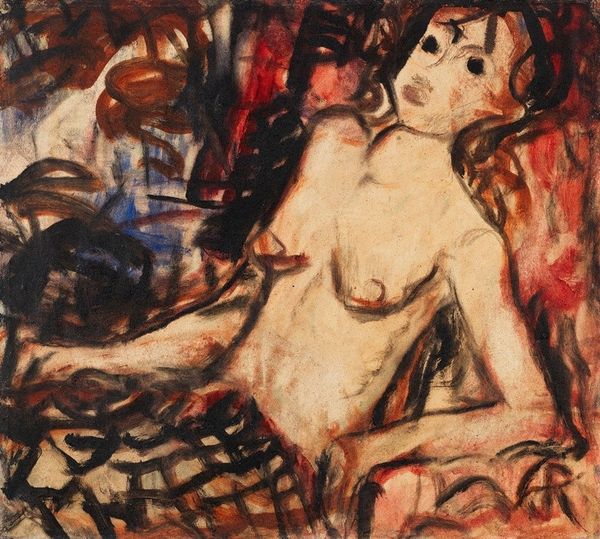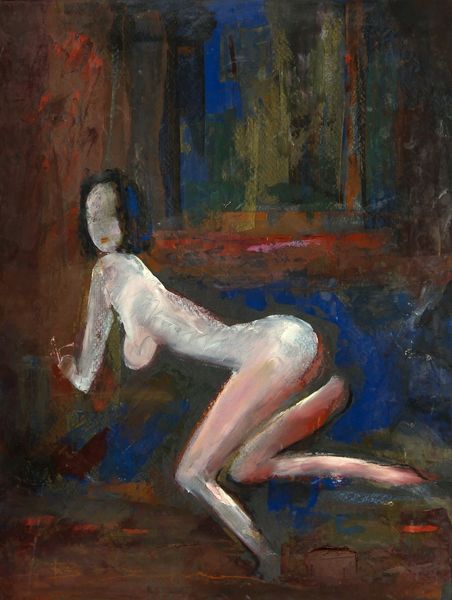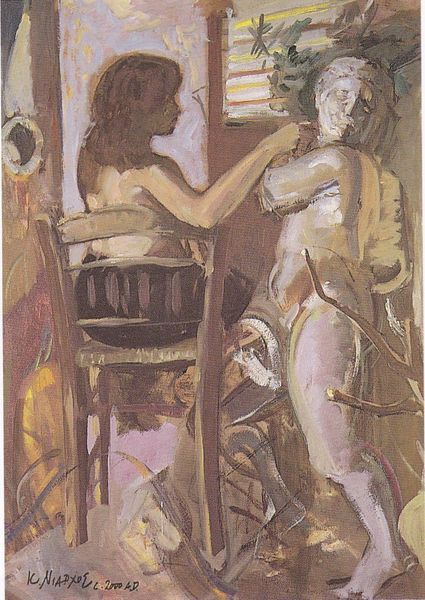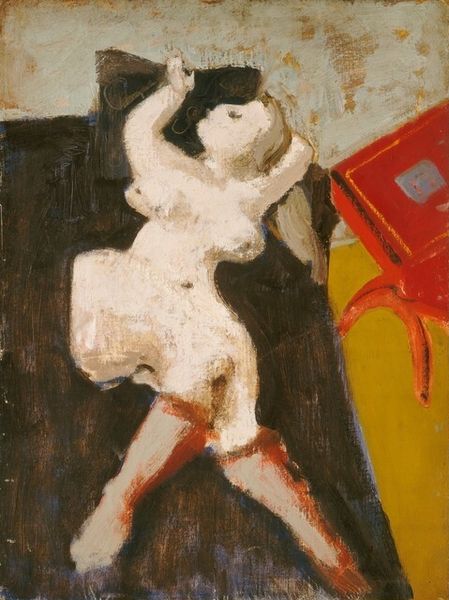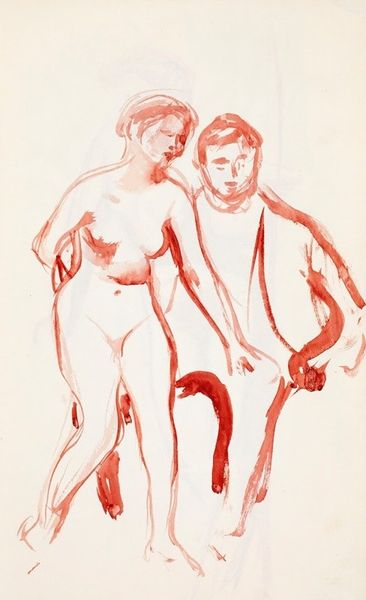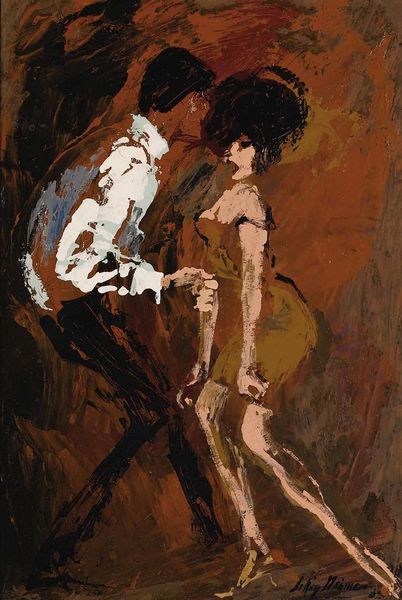
Copyright: Alexander Roitburd,Fair Use
Curator: Alexander Roitburd’s painting "Pushkin," created in 1999, strikes you immediately with its bold colours and curious composition, wouldn’t you say? Editor: Yes, it's visually quite arresting. The red background, the checkerboard floor – it all contributes to this feeling of unease, even anxiety. The figures themselves add to that feeling: disjointed, somewhat distorted... It's as if the painting is dissecting its subject. Curator: Exactly. Looking at the visible brushstrokes, we see a raw, almost frantic application of the oil paint. You get a sense of the artist's physical engagement with the materials – the texture becomes almost as important as the imagery. And what do you make of that erotic-art tag assigned to the work? Editor: Well, considering the classical subject matter and dismembered depiction of the body, I’d say it's pretty apt. I think Roitburd is very consciously playing with the concept of idealised beauty versus something more carnal and, in a way, quite disturbing. Notice how the upper torso is a bit sensual while the other elements around it have a darker emotional tone. It invites psychological exploration beyond the mere aesthetic surface. Curator: The painting certainly subverts the conventional portrait format. What appears to be a vase functions as a disruptive device, literally containing and distorting the figures. This makes me wonder about the act of portraiture itself – how the materials and techniques of painting can be used to question representation. In any case, what you make of Pushkin in particular being at the top? Any idea why he has given the piece the title? Editor: Knowing Pushkin’s biography and poetic persona, it's reasonable to suggest that it evokes his own tumultuous love life and intense creative process. The figures perhaps embody both a state of poetic inspiration and also fragmentation from that state, and by extension fragmentation from reality. Curator: Roitburd seems to have crafted an experience that lingers, a portrait refusing easy answers. It is expressionist in that regard. Editor: Absolutely, it is very effective in its refusal to adhere to the norm, leaving you pondering both technique and its inherent symbolism.
Comments
No comments
Be the first to comment and join the conversation on the ultimate creative platform.

